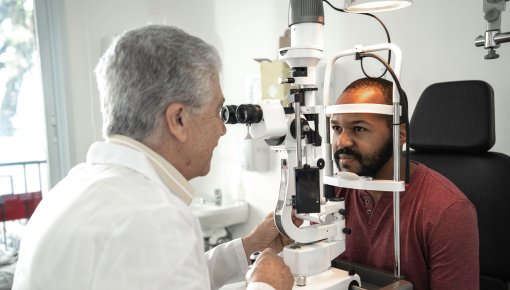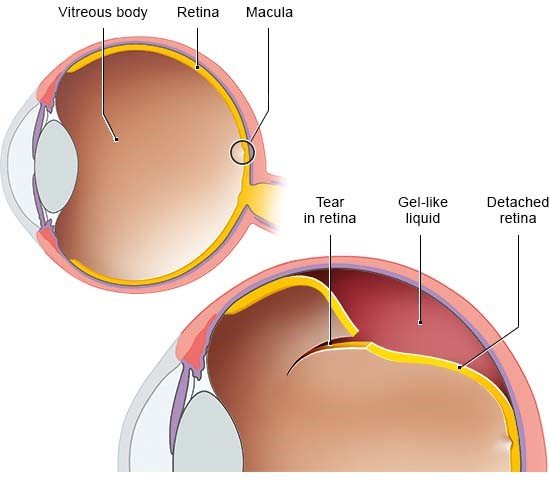American Optometric Association. Care of the Patient with Retinal Detachment And Related Peripheral Vitreoretinal Disease. 2004.
Bechrakis NE, Dimmer A. Rhegmatogene Netzhautablösung Epidemiologie und Risikofaktoren. Ophthalmologe 2018; 115: 163-178.
D'Amico DJ. Clinical practice. Primary retinal detachment. N Engl J Med 2008; 359(22): 2346-2354.
Deutsche Ophthalmologische Gesellschaft (DOG), Retinologische Gesellschaft (RG), Berufsverband der Augenärzte Deutschlands (BVA). Risikofaktoren und Prophylaxe der rhegmatogenen Netzhautablösung bei Erwachsenen (S1-Leitlinie). AWMF-Registernr.: 045-025. 2022.
Feltgen N, Walter P. Rhegmatogenous retinal detachment – an ophthalmologic emergency. Dtsch Arztebl Int 2014; 111(1-2): 12-21; quiz 22.
Gelston CD, Deitz GA. Eye Emergencies. Am Fam Physician 2020; 102(9): 539-545.
Kang HK, Luff AJ. Management of retinal detachment: a guide for non-ophthalmologists. BMJ 2008; 336(7655): 1235-1240.
Lang GK. Augenheilkunde. Stuttgart: Thieme; 2014.
Sena DF, Kilian R, Liu SH et al. Pneumatic retinopexy versus scleral buckle for repairing simple rhegmatogenous retinal detachments. Cochrane Database Syst Rev 2021; (11): CD008350.
Ullrich M, Zwickl H, Findl O. Incidence of rhegmatogenous retinal detachment in myopic phakic eyes. J Cataract Refract Surg 2021; 47(4): 533-541.
IQWiG health information is written with the aim of helping people understand the advantages and disadvantages of the main treatment options and health care services.
Because IQWiG is a German institute, some of the information provided here is specific to the German health care system. The suitability of any of the described options in an individual case can be determined by talking to a doctor. informedhealth.org can provide support for talks with doctors and other medical professionals, but cannot replace them. We do not offer individual consultations.
Our information is based on the results of good-quality studies. It is written by a team of health care professionals, scientists and editors, and reviewed by external experts. You can find a detailed description of how our health information is produced and updated in our methods.







